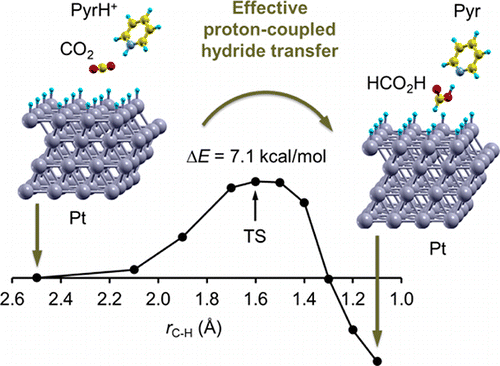Recent breakthroughs in electrochemical studies have reported aqueous CO2 reduction to formic acid, formaldehyde, and methanol at low overpotentials (−0.58 V versus SCE), with a Pt working electrode in acidic pyridine (Pyr) solutions. We find that CO2 is reduced by H atoms bound to the Pt surface that are transferred as hydrides to CO2 in a proton-coupled hydride transfer (PCHT) mechanism activated by pyridinium (PyrH+), CO2 + Pt–H + PyrH+ + e– → Pyr + Pt + HCO2H. The surface-bound H atoms consumed by CO2 reduction is replenished by the one-electron reduction of PyrH+ through the proton-coupled electron transfer (PCET), PyrH+ + Pt + e– → Pyr + Pt–H. Pyridinium is essential to establish a high concentration of Brønsted acid in contact with CO2 and with the Pt surface, much higher than the concentration of free protons. These findings are particularly relevant to generate fuels with a carbon-neutral footprint.
